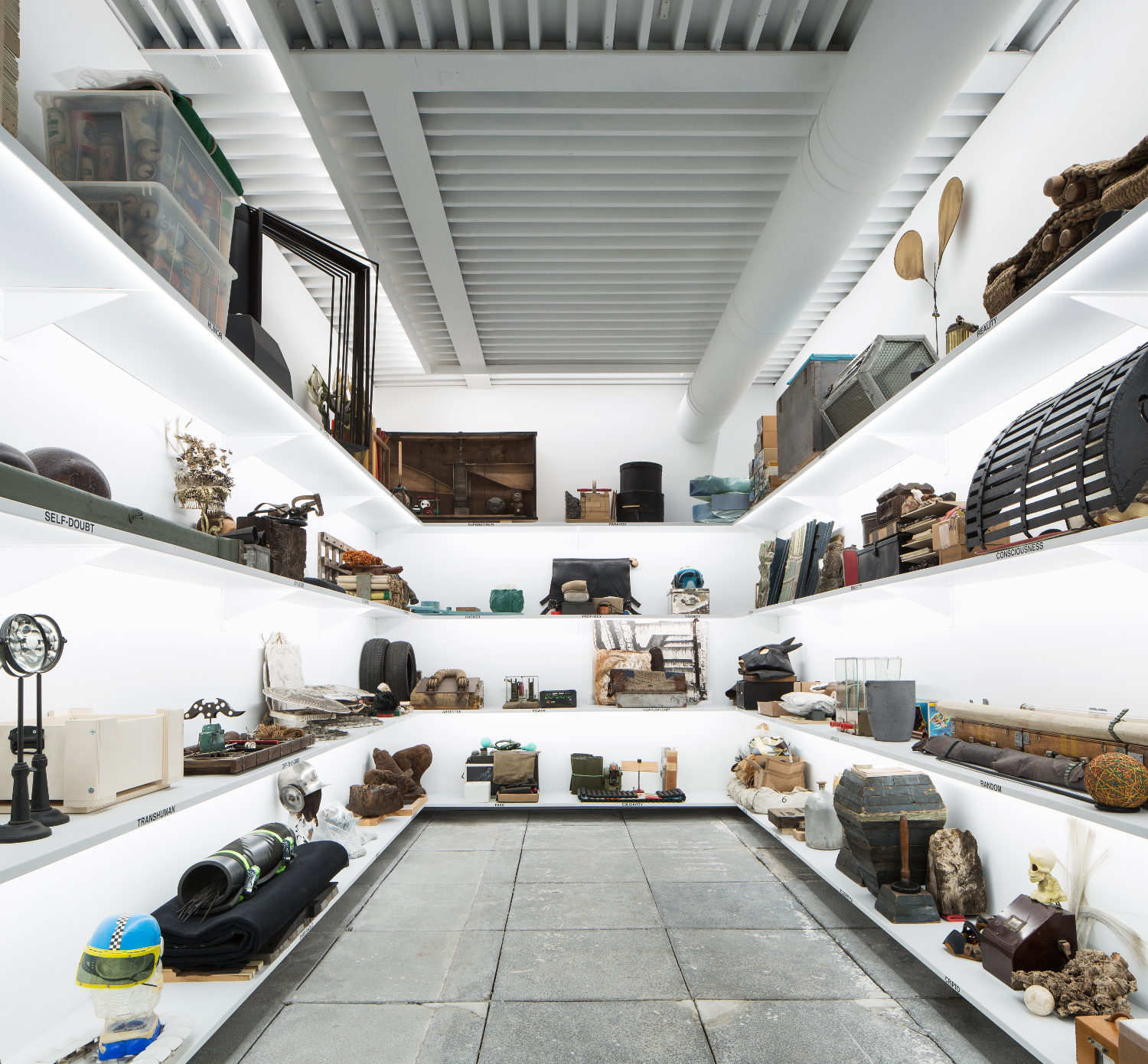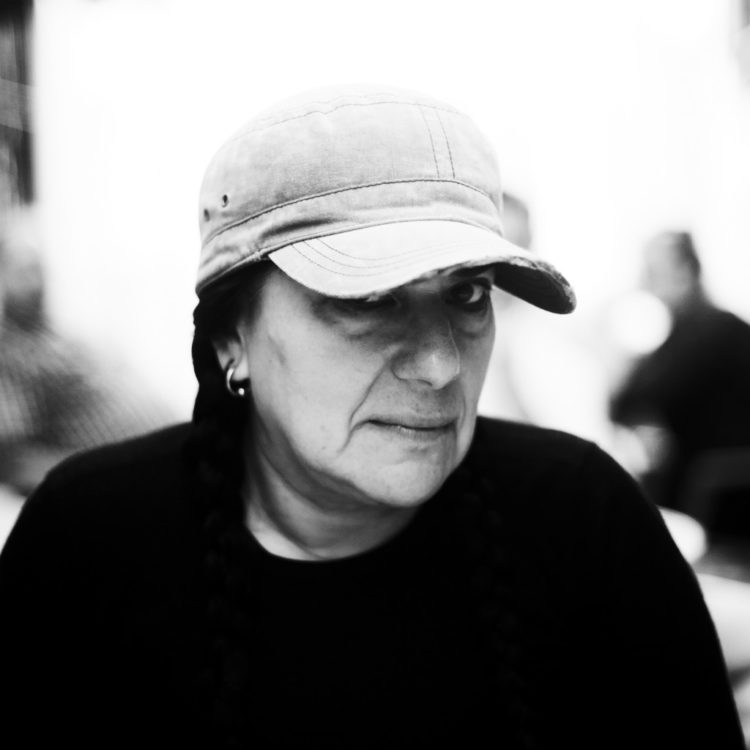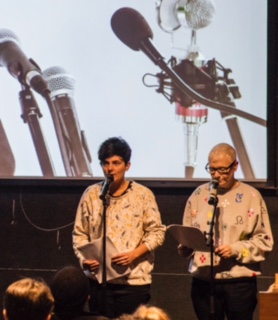Review
Lara Favaretto, Thinking Head, 2019, 50 groups of objects relating to one word each, mixed media, variable dimensions, Courtesy La Biennale di Venezia, © Photo : Francesco Galli
The 58rd Venice Biennale of Art invites us in the form of a wish to attend to our times through the art works brought together by Ralph Rugoff, its artistic director. He believes in the ability of art to open our eyes. In this period of ecological concern and political anxiety, the tone is generally serious and, notwithstanding the very diverse choice of works, laughter and mockery are virtually absent. Even the surprises have been inflected by this serious and committed imperative.
One of the formal features of the exhibition is to show two works by each of the artists, one at the Arsenale and the other in the central pavilion, at the Giardini. This worthwhile strategy highlights effectively the fact that contemporary artists do not confine themselves to a single medium or technique. The choice also has been made to promote living artists, often young, whose works have been seen widely across many institutions in recent years. This year’s selection, a little lacklustre on the whole, does include some very interesting creative offerings for those who take the time to consider them. R. Rugoff’s engaged and thoughtful approach has perhaps led to the application of a scrupulous principle of parity. In the main exhibition, a conscious striving towards equality can be observed: 40 women (two of whom are members of mixed collectives) are among the 81 participants registered in the catalogue. What follows is a brief overview of the women artists’ creations.
Beyond the numeric, the effort to strike an equal balance of works by female and male artists is to be found in the counterpoints that intersperse the exhibition. Works by Ed Atkins (born in 1982) and Apichatpong Weerasethakul (born in 1970) are placed alongside large photographic prints by South African Zanele Muholi (born in 1972) and by Japanese Mari Katayama (born in 1987). Z. Muholi’s and M. Katayama’s series of photographs may have been put near each other because they both present self-portraits in which the photographers play in a direct and imaginative way with the various stereotypes that could be imposed upon these staged bodies, one as a black lesbian visual activist, the other as a person born with an unconventional body (one left hand with two fingers; both legs amputated).

Yin Xiuzhen, Trojan, 2016-2017, steel frame, used clothes, 470 x 570 x 220 cm, Courtesy La Biennale di Venezia, © Photo: Italo Rondinella
The drive for an equitable gender distribution is reflected in the large – one might say, monumental – creations, which cannot fail to be noticed. For example, the imposing sculptures of the American Carol Bove (born in 1971) regularly punctuate the course. They are composed of rusty industrial metal parts, recovered then combined, and are partially covered with bright colours. This recalls the hieratic nature of modernism and it disturbs our conception of a heavy material: for a moment, we imagine it to be floating. For her part, Lee Bul (born in 1964) has constructed a large metal assemblage from the debris of a border post in the demilitarized zone between the two Koreas, and a platform for political messages. Symbolic, huge and made of used clothing, Trojan (2016-2017), a sculpture by China’s Yin Xiuzhen (born in 1963), combines the concepts of overconsumption and the carbon footprint of air travel to remind us that everyone, like this passenger bent over in a brace position, are headed for disaster. Among these highly visible works are the big futuristic cocoons of the Korean Anicka Yi (born in 1971) and the video installations of the German Hito Steyerl (born in 1966).
To these must-see pieces, we must also add the installation Thinking Head (2017-2019) by the Italian Lara Favaretto (born in 1973). Mist diffused from the exterior roof of the central building of the Giardini regularly obscures the façade in order to, according to the artist, call into question the “cultural authority” represented by the edifice.
Inside, the artist plays with key words, tools of reflection for imagining an exhibition (perhaps even the current Biennale, as the descriptive notice suggests): “opacity”, “solidarity”, “amnesia”, “self-doubt”, “superstition”, “heritage”, “absentee”, “hacker”, “hypnosis”, “control”, etc. The work resembles the labelled shelves of a shop’s stockroom where words are associated with repurposed and sculpted objects without there being necessarily an obvious connection between the two. This tendency is further emphasised by L. Favaretto’s intention to change the place of the different elements in the installation as the exhibition goes on. Is this a form of discreet questioning of the Biennale’s statement of intent, in which it points to the influence of language and knowledge on works and objects, the latter being instrumentalized to illustrate a subject?
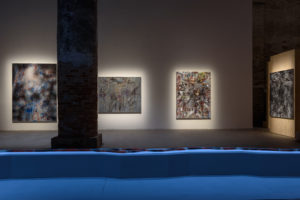
Julie Mehretu, various works, 2017-2018, ink and acrylic on canvas, Courtesy La Biennale di Venezia, © Photo: Andrea Avezzù

Avery Singer, various works, 2017-2019, acrylic on canvas stretched over wood panel, Courtesy La Biennale di Venezia, © Photo: Andrea Avezzù
The same concern for parity seems to have guided the choice of graphic and canvas works, with significant ensembles of female artists working in paint. These include the Swiss-Uruguayan Jill Mulleady (born in 1980), the Ethiopian-American Julie Mehretu (born in 1970), the Nigerian Njideka Akunyili Crosby (born in 1983 and currently living in the United States) and the American Avery Singer (born in 1987). Until recently the references in this field have remained predominantly male, with women painters hardly mentioned in art history books.
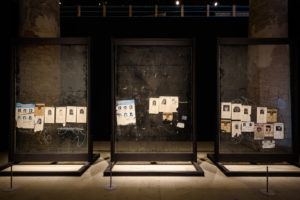
Teresa Margolles, La Búsqueda (2) [The Search], 2014, intervention with sound frequency on three glass panels transported from the historical centre of Ciudad Juarez, Mexico; three glass panels with wood frame, 181 x 286 x 120 cm, Courtesy La Biennale di Venezia, © Photo: Andrea Avezzù
Among the more discreet pieces is La Búsqueda (1) [The Search, 2014] by Mexican Teresa Margolles (born 1963). We are moved and troubled when we enter the space of her work. Three damaged, dusty and graffitied glass panels display posters of missing women, vain attempts to solicit any sightings. The artist evokes the femicide of women workers in Ciudad Juárez (a city in northern Mexico on the border with the United States). These murders, committed from the late 1990s and into the early 21st century, partly unsolved, are most probably linked to drug trade. The pulsating low-frequency sound unconsciously reinforces the terrible feeling that assails us.
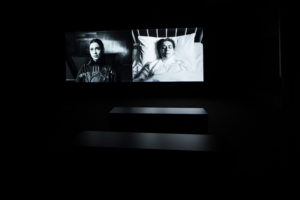
Larissa Sansour, Heirloom (detail), 2019, film: Larissa Sansour and Søren Lind, In Vitro, 2019 two-channel film, production still, Danish Pavilion, Courtesy La Biennale di Venezia, © Photo: Francesco Galli
However, the gender balance is far from being as good in the national pavilions, where the proportion of women is only 35%: of just over 200 participants, 75 are women.
In keeping with the general theme, the Danish pavilion features Heirloom (2019) by the Palestinian Larissa Sansour (born in 1973), a work that is uncharacteristically serious in tone. Through a film broadcast on two screens and a subtle installation, she speaks poignantly about forbears, inheritance, being uprooted and means of survival. The Swiss contributions, with the duo Pauline Boudry (born in 1972) and Renate Lorenz (born in 1963), and the French, with Laure Prouvost (born in 1978), show a certain lightness of touch. This is also true of the Lithuanian pavilion, designed by Rugilė Barzdžiukaitė (born in 1983), Vaiva Grainytė (born in 1984) and Lina Lapelytė (born in 1984). Crowned by the Golden Lion, this pavilion is at once joyous and strong in tone, while nevertheless evoking ecological disaster.
Let’s end this overview with the Australian pavilion, which is similar to the Lithuanian in that it valorises soundtrack and is filled with energy. Designed by Angelica Mesiti (born in 1976), it welcomes the public into a circle: visitors gather round to watch on giant screens how the artist gives life to architectures of power and decision-making, namely a parliament where major legislative decisions are taken which directly affect the lives of citizens. The scenes filmed show protagonists – performers, dancers and musicians – poetically and happily occupying these spaces. This enlivening of places that are usually solemn and muted restores their democratic essence.
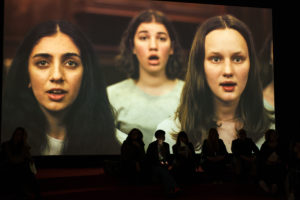
Angelica Mesiti, ASSEMBLY, 2019, production still, three-channel video installation, HD video projections, colour, six-channel mono sound, 25’, Australian Pavilion, Courtesy La Biennale di Venezia, © Photo: Magali Le Mens
This 2019 Biennale confirms that, when it is conscious and deliberate, the effort to achieve parity bears fruit: the international exhibition, which is half female, is an example that is unfortunately not very often followed by the national pavilions. It is to be hoped that this effort is not just a one-off action driven by the wishes expressed by the curator like the those he expressed about the announced climate warming. Regarding the artists operating through the prism of the impending ecological disaster, while all visitors are critical of the facts, little reflection is given to them with regard to their own behaviour in the context of the workings of this cultural event. Will those coming to the Biennale, regular users of airports, really have become more aware of the demaging effect of air travel and will they actually change their habits after seeing Y. Xiuzhen’s Trojan?
May You Live in Interesting Times, from 11 May to 24 November 2019 at the Giardini and Arsenale (Venice, Italy).
Magali Le Mens, "“May You Live in Equal Times”: while the International Art Exhibition achieves gender balance, the National Pavilions, by contrast, showcase predominantly male artists.." In Archives of Women Artists, Research and Exhibitions magazine, . URL : https://awarewomenartists.com/en/magazine/may-you-live-in-equal-times-une-exposition-internationale-paritaire-des-pavillons-nationaux-majoritairement-masculins/. Accessed 12 July 2025
